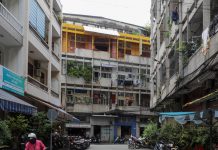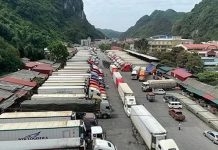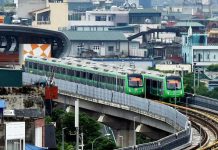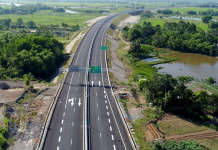
Poor traffic safety and being cheated are among the most negative experiences for tourists in Vietnam, a World Bank report says.
The newly-released report said that while tourism has boomed in the country, the number of foreign visitors who returned stood at just 40 percent in 2017. This is lower than key regional competitors like Thailand and Indonesia, which had some 60-70 percent and 55 percent repeat visitors in 2016, respectively.
It said road safety and cheating by tourism services are leaving bad impressions on international visitors, negatively affecting the quality of the visitor experience in many of Vietnam’s popular tourist destinations.
This has contributed to low rates of repeat visits, said the report, titled “Special Focus: Vietnam’s Tourism Developments – Stepping Back from the Tipping Point – Vietnam’s Tourism Trends, Challenges and Policy Priorities”.
“The overall problem with Vietnam is ‘return visitors’,” Carl Robinson, an American and a former war correspondent who used to lead tours in Vietnam, told VnExpress International. “People come once, tick it off their list and then don’t come back again.”
The WB report quoted a survey which found 42.7 percent of international visitors to Vietnam said unsafe traffic was among the worst travel experiences, while 24.7 percent said they were cheated by tourism businesses. 22.4 percent of foreigners complained of trouble with local vendors, it added.
 |
Foreign tourists buy souvenirs at the Ben Thanh Market in downtown Saigon. Photo by Shutterstocks/diemtinh. |
“Left unaddressed, these issues, in combination with increased crowding in destinations, risk deterring first-time visitors from returning, as well as fueling negative word-of-mouth referrals,” the report noted.
According to the World Health Organization’s (WHO) statistics, road death rates in Thailand and Vietnam respectively reached 32.6 and 26.1 per 100,000 last year.
More than 18,720 accidents occurred in Vietnam last year, killing 8,244 people and injuring nearly 14,800, the National Traffic Safety Committee reported.
Traffic accidents remain the biggest single cause of fatalities in Vietnam and visitors are often shocked by the chaos they see on Vietnamese streets in big cities.
Meanwhile, travel scams remain a problem in cities like Hanoi and Ho Chi Minh City despite occasional crackdowns by local authorities, tarnishing the country’s image and discouraging tourists from returning.
Weak law enforcement and low fines are partly to blame for the pervasive fraud perpetrated on visitors, including tricking foreigners into buying things at unreasonable prices.
While Vietnam is in the midst of a tourism boom with a record high of 15.5 million foreign arrivals in 2018, a year-on-year rise of 20 percent, the numbers remained lower than that of neighboring countries in the region. Thailand (38 million), Malaysia (25 million) and Singapore (18.5 million) received far more tourists than Vietnam.
Furthermore, Vietnam has not done a good enough job of cashing in on tourism. A survey released last year at the Vietnam Travel and Tourism Summit showed that a foreign tourist spent $96 a day on average in Vietnam in 2017, three times lower than in Singapore ($325), and well below that of the Philippines ($115), Indonesia ($132), Malaysia ($134), and Thailand ($163).
Tourism is expected to contribute 10 percent to Vietnam’s GDP by 2020 when the country hopes to welcome up to 20 million foreign visitors and earn $35 billion in tourism revenues.
Vietnam has set a target of receiving 18 million foreign arrivals this year.

































